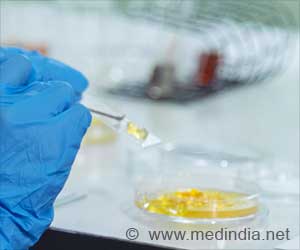Joseph M. Miano, Ph.D associate professor within the Cardiovascular Research Institute at the University of Rochester Medical Center said that small regulatory DNA sequences control the genes and their functions.
The researchers scanned the vast human DNA code to reveal 60 genes controlled by one such regulatory sequence. The findings of the study were published in the journal Genome Research. Understanding the regulatory sequences and their control over gene behavior will help us to create new classes of treatment for nerve disorders and heart failures.These sequences are the answers for the complex nature of humans despite the fact that they have only about one-fifth as much genetic material as wheat. Genes are the chains of deoxyribonucleic acids (DNA) that encode instructions for the building of proteins, the workhorses that make up the body's organs and carry its signals.
But the real intelligence of our system is controlled by tiny bits of genetic material that tell genes what to do. The Human Genome Project, reported the results in 2001 said that human genetic material consists of about 3 billion base pairs but the genes that code for direct protein construction, comprise of about 2% of all human DNA.
The remaining 98% of human genetic material consists of the Regulatory sequences. These were once thought as junk DNA. DNA segments that code for proteins is about 200 base pairs in length, whereas regulatory sequences are 6-10 base pairs.
In an embryo the DNA must be read and copied again and again to supply each cell with the DNA. Random changes, or mutations, are inserted into the code during the copying process. These are identified as a result of mutation within a gene that directs protein construction, but the author believes that soon more and more disease-causing mutations will be found within regulatory sequences that control genes.
This will benefit the geneticists to pinpoint the growing number of disease-causing mutations. In Miano's study, the regulatory sequence under examination was the CArG box. Any sequence of code starting with 2 Cs, followed by any combination of 6 As or Ts, and ending in 2 Gs is a CArG box. There are 1,216 variations of CArG box. These associate with the nuclear factor called serum response factor (SRF) and several other proteins within a genetic regulatory network.
Advertisement
Researchers also make use of comparative genomics to study the relationships between the DNA of different species. CArG boxes identified by the computer screen were then tested to see if they interacted with SRF and changed the behavior of genes as predicted. The study disclosed 60 CArG boxes to exert an influence over a gene.
Advertisement
CArG sequences is also found near the genes that direct the building of nerve cells and blood vessels, suggesting they may be involved in diseases affecting those tissues as well. The answer to the degree of human complexity is that of the Regulatory sequences. It enables a single gene to produce the same protein at different times, places and concentrations with subtly different roles.





